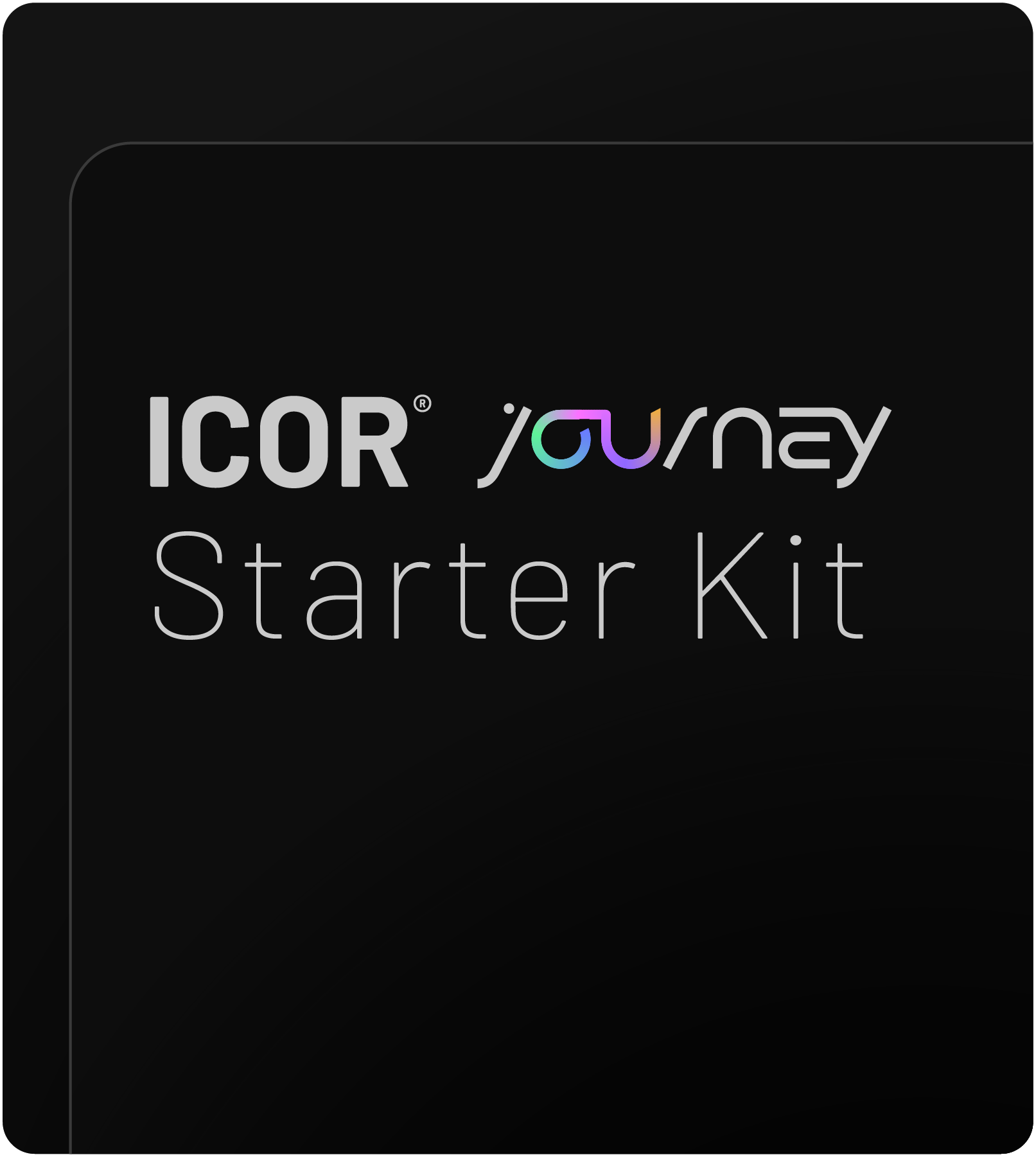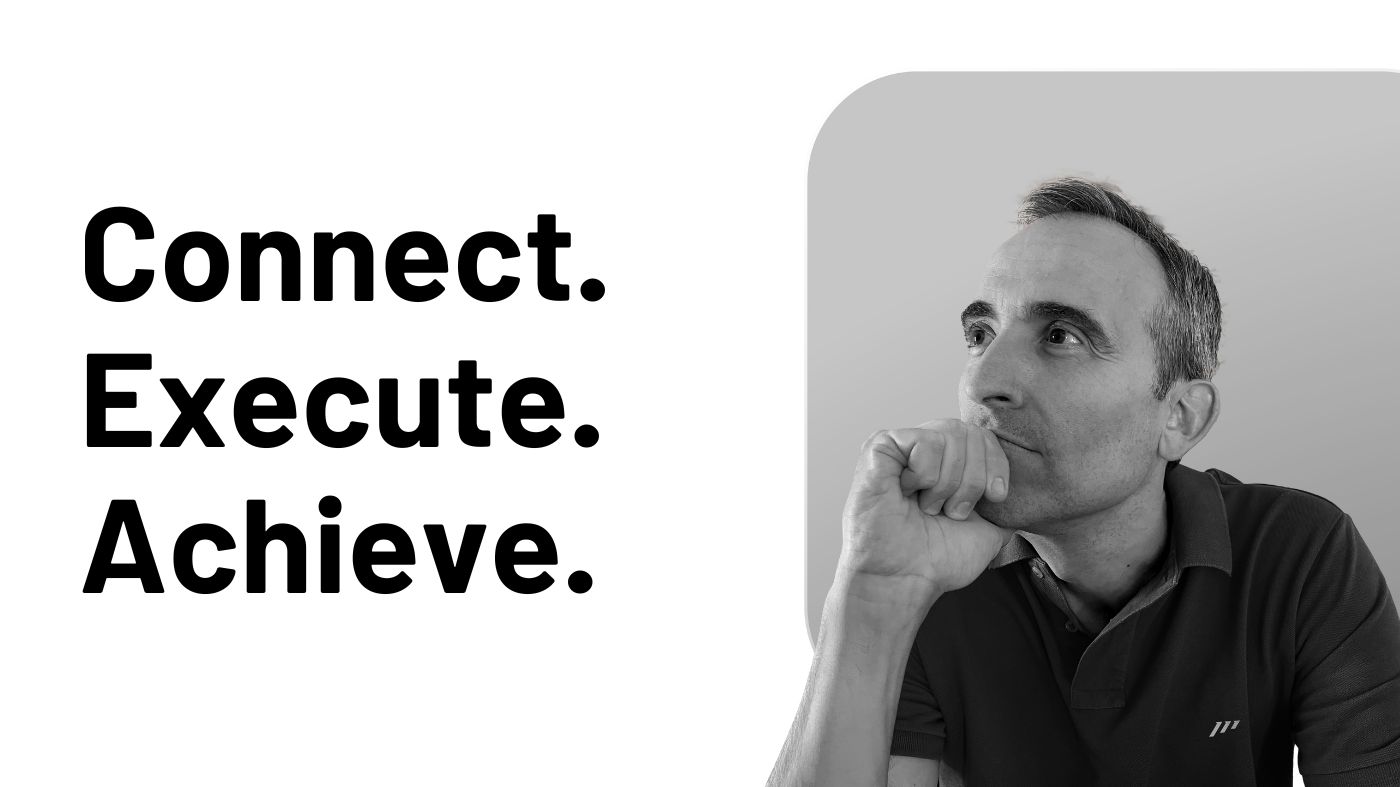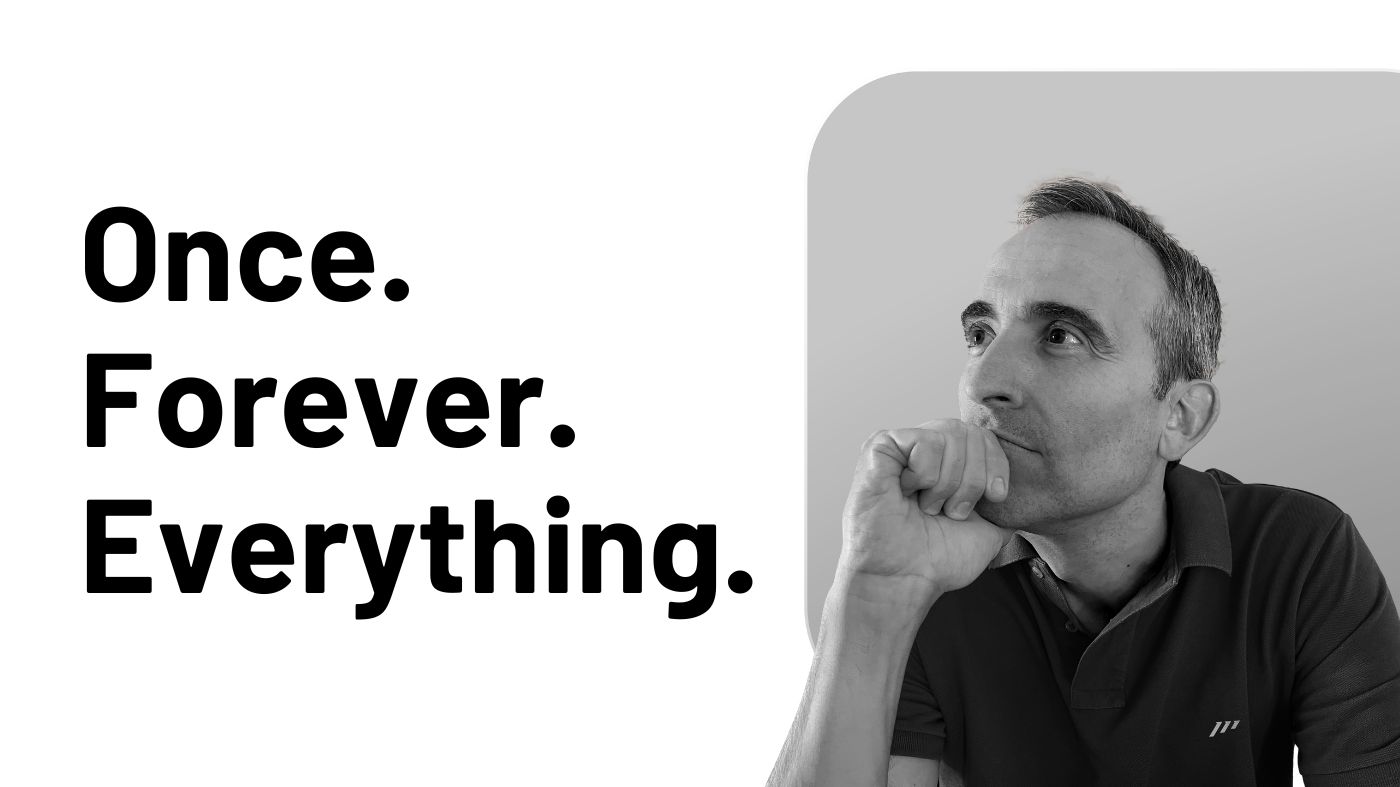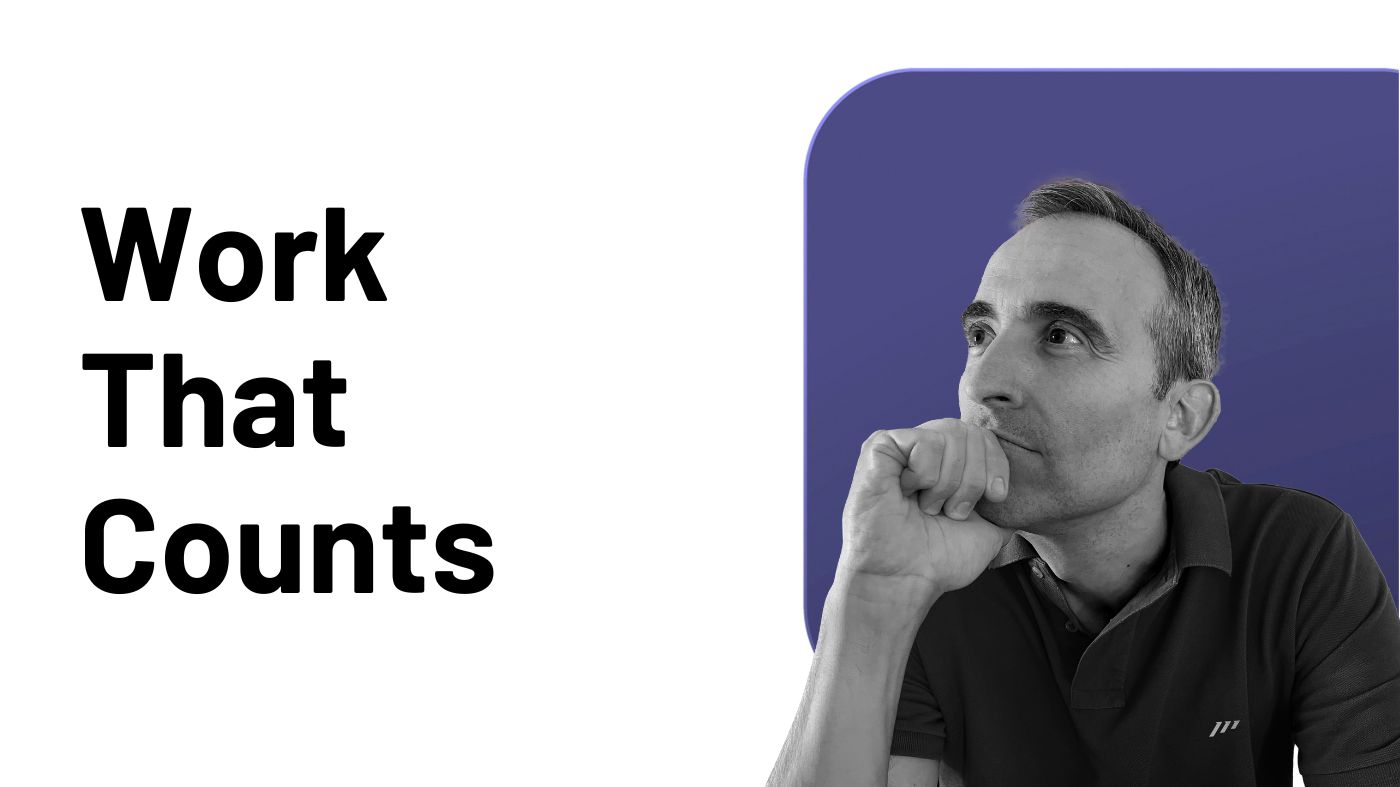Imagine waking up to a mind racing with countless tasks, your calendar packed with meetings, and your inbox overflowing with emails marked “urgent.”
Your to-do list seems infinite, growing faster than you can check items off.
That knot in your stomach tightens as you wonder: “How will I ever get through all of this?”
If this scenario feels painfully familiar, you’re not alone.
As someone who has coached thousands of busy professionals, from CEOs to startup founders, I’ve witnessed this same pattern of overwhelm repeatedly.
I’ve seen their pain firsthand, felt their anxiety radiating through our conversations.
They describe ending each day exhausted yet accomplishing nothing meaningful, consumed by a void sensation, drowning in frustration and negative emotions. Day after day after day, this cycle continues, eroding their confidence and passion.
That sensation of drowning in responsibilities isn’t just uncomfortable; it’s actively preventing you from reaching your true potential and experiencing the fulfillment that should come with your success.
Here’s what most productivity experts won’t tell you: controlling the infinite isn’t easy, but it is simple.
The key isn’t finding more hours in the day, it’s setting the right boundaries.
While building a comprehensive productivity system you can fully trust requires time (one to three months for most, sometimes up to a year), getting immediate control of your situation doesn’t have to wait. You can define your strategy in just one hour and implement it in 1-2 weeks.
This isn’t about another complex methodology that requires months to master.
This is about regaining control today with a straightforward, five-step process that transforms chaos into clarity and overwhelm into fulfillment, starting right now.
Let me show you how.
The Problem: Trying to Control the Infinite Without Boundaries
The fundamental challenge we all face isn’t a lack of productivity tools or techniques.
In fact, most busy professionals I work with already use sophisticated productivity systems, expensive tools, and countless productivity hacks.
The real problem?
You’re trying to control something infinite with finite resources.
Your time, energy, and attention are strictly limited.
Yet the potential demands on these resources are virtually unlimited.
There will always be more emails to answer, more meetings to attend, more projects to launch, more fires to extinguish.
Without clear boundaries, this imbalance creates a perpetual state of overwhelm.
“You can do anything, but not everything.” — David Allen
You’re constantly fighting a battle you cannot win because:
-
The game is rigged from the start. No matter how efficiently you work, there will always be more to do than you can possibly accomplish.
-
Traditional productivity advice often makes it worse. “Work harder,” “wake up earlier,” “optimize every minute”… These approaches only temporarily address symptoms while ignoring the root cause.
-
Most productivity systems take too long to implement. When you’re already drowning, you don’t have months to master a complex new methodology. This is where ICOR®, the methodology we’ve created at the Paperless Movement® to help busy professionals design, build, and implement their productivity system end to end, provides unique value, allowing you to implement improvements without disrupting your daily work. Our methodology works in parallel with your existing workflows, enabling you to make incremental progress day by day while still meeting your current obligations.
The key insight that transforms this situation is accepting a fundamental truth: you cannot do everything.
No one can. Not even the most productive CEOs, thought leaders, or entrepreneurs.
What separates the overwhelmed from the fulfilled isn’t their capacity to do more: it’s their ability to clearly define what matters most and deliberately ignore everything else.
The good news?
This shift requires a mere fraction of the time most productivity transformations demand. One hour to establish your strategy, followed by 1-2 weeks of implementation, can break the cycle of overwhelm permanently.
Let me walk you through exactly how to make this happen.
The Five-Step Process: Transforming Chaos into Control
Before we dive in, an important disclaimer.
At ICOR®, we distinguish between two main worlds of productivity: information (managing ideas and knowledge) and action (executing tasks). While both are crucial for a complete productivity system, this article focuses exclusively on action.
Why?
Because when you’re overwhelmed, you need to first control what you do before worrying about how you process information.
It’s by mastering action that you create the bandwidth to later tackle information management, ultimately building a productivity system end to end that allows you to move from information to action to goal accomplishment seamlessly.
“My goal is no longer to get more done, but rather to have less to do.” — Francine Jay
Let’s get practical with a straightforward, five-step process to move from overwhelmed to fulfilled in just one hour of strategic planning.
Step 1: Vomit (Release)
The first step is deceptively simple yet immensely powerful: get everything out of your head and onto paper (or your digital equivalent).
Write down every task, commitment, and responsibility currently occupying mental space.
Focus specifically on actions, things you want and need to do.
Don’t worry about organization, priority, or even feasibility at this stage: the goal is complete mental release.
Give yourself exactly 15-20 minutes for this step, creating a time boundary that forces focus.
Don’t worry if you feel rushed; most people capture their most important items within the first 5 minutes. And if you’ve forgotten something truly important after this time limit, rest assured it will emerge naturally later. The subconscious and real world have a way of reminding us about what truly matters.
This process accomplishes three crucial things:
-
It creates immediate mental relief. By externalizing these items, you free your mind from the exhausting job of remembering everything.
-
It reveals the true scope of your commitments. Almost invariably, my clients discover they actually have far fewer items than they imagined. What felt like thousands of obligations often turns out to be 50-100 items.
-
It makes your challenges tangible. Tangible problems can be solved. Vague, looming anxieties cannot.
Step 2: Distill
Now comes the first boundary: from your complete list, select only 15-20 items that merit your immediate attention.
This step is where most productivity systems fail because they avoid the necessary discomfort of choice. But this discomfort is precisely what creates freedom.
When selecting your 15-20 items:
-
Choose tasks that directly align with your most important goals.
-
Include items with imminent deadlines that cannot be delegated.
-
Select tasks where your unique contribution creates significant value.
The magic of constraining yourself to 15-20 items is psychological.
While this number might still feel substantial, it creates a sense of achievability that an unlimited list never can. Your brain can conceptualize and manage this number of tasks, giving you a genuine sense of control.
“Success is not about doing more. It’s about doing what matters most.” — Marie Forleo
This step requires acknowledging a fundamental reality: not everything can be done. Sacrifice isn’t just necessary; it’s desirable. By deliberately choosing what doesn’t make this list, you reclaim your agency and focus.
Allow yourself 15 minutes for this crucial distillation.
Step 3: Focus
From your 15-20 selected items, now identify just five tasks that represent your Weekly Goals. These are the non-negotiable priorities that, once completed, will move you meaningfully toward your larger goals.
Important: These tasks should not exceed 2-3 hours each. If any selected task is larger, break it down into smaller components that fit within this timeframe.
This constraint serves two vital purposes:
-
It ensures tasks are actionable rather than vague ideas.
-
It creates clear start/finish points that provide motivation and momentum.
These five tasks are what we call Weekly Goals: concrete actions that, once completed, guarantee you’re making meaningful progress. They form the backbone of your focused Task Management system.
Take 10 minutes to thoughtfully select these five critical tasks.
Step 4: Schedule
With your five Weekly Goals identified, as I said before, assign one to each day of your workweek.
This one-per-day allocation isn’t arbitrary. It acknowledges the reality of your busy schedule while ensuring daily progress toward what matters most.
By designating a specific day for each Weekly Goal, you:
-
Create clear daily priorities.
-
Eliminate decision fatigue about what to work on.
-
Allow for focused blocks of time dedicated to meaningful work.
-
Build in flexibility for unexpected demands.
This daily assignment becomes what we call your Highlight of the Day, the one non-negotiable task that defines success for that day.
Allow 5 minutes to assign each Weekly Goal to a specific day.
Step 5: Commit and Execute
The final step transforms your plan into reality: commit to making the time and executing your Weekly Goals no matter what else arises.
This commitment means:
-
Blocking time on your calendar specifically for your Highlight of the Day.
-
Communicating boundaries to colleagues when necessary.
-
Eliminating distractions during your focused work time.
-
Refusing to accept excuses from yourself.
Remember: you have just one goal each day, to complete that day’s Highlight of the Day. This singular focus simplifies decision-making and increases your probability of success.
When you know this task directly connects to your most important goals, finding motivation becomes far easier. You’ll naturally prioritize it over the noise and distractions that previously consumed your attention.
The remaining 5-10 minutes of your hour are for setting up any practical systems needed to support this execution: calendar blocks, notification adjustments, communication templates for setting boundaries, etc.
By implementing this five-step process, you’ve created the initial solid foundational core of a robust Task Management system, a crucial component of your final productivity system. It acknowledges limitations, establishes clear boundaries, and focuses your finite resources on what truly matters.
Most importantly, it gives you back a sense of control and purposeful direction, transforming overwhelm into fulfillment.
The Mindset Shift: From Fighting the Void to Embracing Reality
Implementing this five-step process does more than just organize your tasks.
It fundamentally transforms how you perceive your relationship with work and productivity.
Let’s examine this powerful shift in mindset.
Before: Fighting an Impossible Battle
At the beginning of this journey, you were likely:
-
Attempting to accomplish an unlimited number of tasks with limited resources.
-
Feeling guilty about everything you weren’t getting done.
-
Constantly playing catch-up, never feeling ahead.
-
Experiencing anxiety about potentially forgotten commitments.
-
Ending each day exhausted but unsatisfied with your progress.
This state represents a futile struggle against infinity. You were trying to accomplish the impossible and feeling like a failure for not succeeding.
It’s like trying to empty the ocean with a teaspoon, a battle you could never win.
After: Working Within Defined Boundaries
Now, with your Task Management system’s foundation in place, you’ve shifted to:
-
Acknowledging the finite nature of your time and energy.
-
Making conscious, deliberate choices about where to focus.
-
Creating clear criteria for what deserves your attention.
-
Having a manageable number of commitments you can actually fulfill.
-
Ending each day with the satisfaction of meaningful accomplishment.
This new state represents alignment with reality. You’ve accepted your limitations and designed a system that works with them rather than against them.
Why This Works: The Psychology of Control
The profound sense of relief and fulfillment that comes from this shift isn’t just about getting more done. It’s about regaining a sense of control and agency over your professional life.
When you were fighting the void, you were at the mercy of an endless stream of demands and expectations. Your attention was constantly pulled in different directions, leaving you feeling scattered and ineffective.
Now, with clear boundaries established, you’ve regained control of your attention and energy. You’re no longer reacting to whatever comes your way; you’re proactively choosing where to focus based on your own criteria and goals.
This sense of control is psychologically powerful.
Research consistently shows that perceived control is a crucial factor in reducing stress and increasing satisfaction. By implementing this Task Management system, you’re not just organizing tasks; you’re reclaiming your autonomy.
The Compound Effect of Daily Progress
Beyond the immediate psychological benefits, this system creates a powerful compound effect through consistent progress.
When you accomplish your Highlight of the Day, every single day, you create momentum. This daily achievement, however small it might seem in isolation, accumulates rapidly (it’s the beauty of systems).
Five meaningful tasks completed each week becomes twenty per month and over two hundred per year. That’s two hundred significant steps toward your most important goals, all achieved without the burnout and anxiety that typically accompany high productivity.
This is how seemingly impossible goals become inevitable outcomes. Not through herculean effort or unsustainable work habits, but through consistent, focused progress over time.
From Awareness to Acceptance
Perhaps the most profound shift happens in how you view your relationship with productivity itself.
Before, you may have been fighting against the reality of your finite capacity, constantly feeling that you should be able to do more.
Now, you’ve moved from awareness of your limitations to acceptance of them. This acceptance isn’t resignation or giving up. Rather, it’s aligning your expectations and systems with reality, which paradoxically allows you to accomplish more than ever before.
“The difference between successful people and very successful people is that very successful people say ‘no’ to almost everything.” — Warren Buffett
This is the true transformation: from a productivity approach based on wishful thinking to one grounded in how humans actually work best. From fighting against your nature to working harmoniously with it.
The result isn’t just better task management. It’s a fundamentally different way of engaging with your work and life, one that leads to sustainable success and genuine fulfillment.





